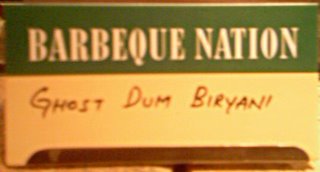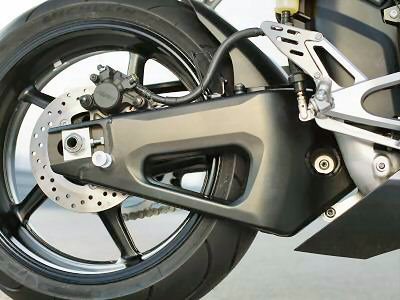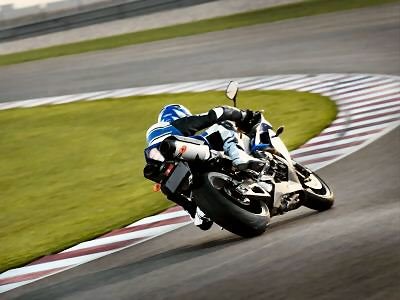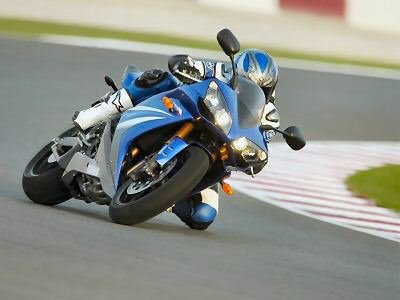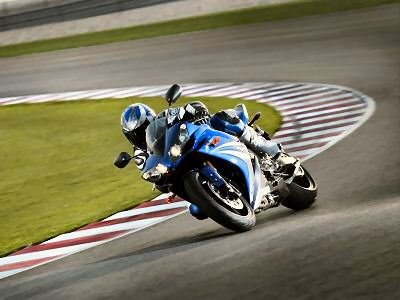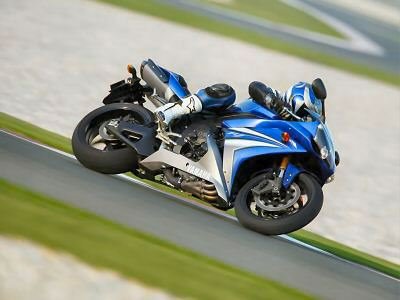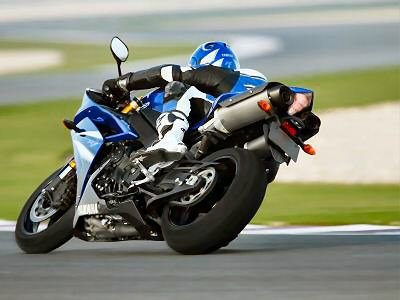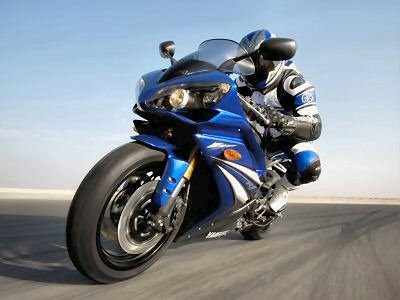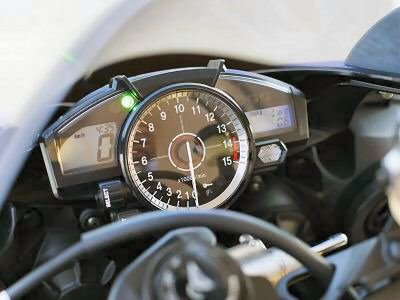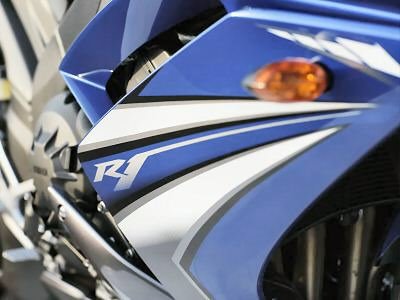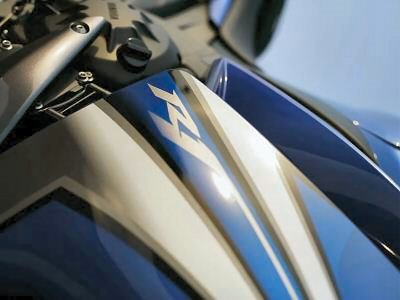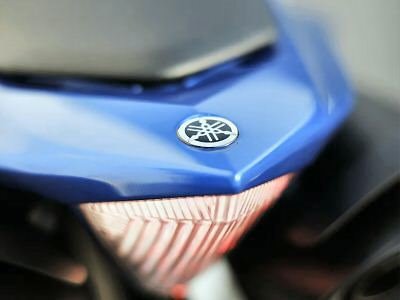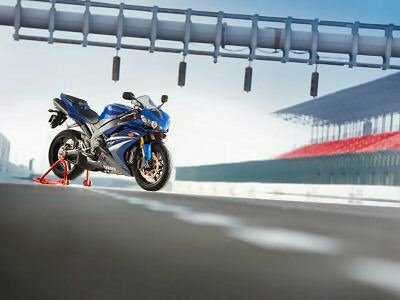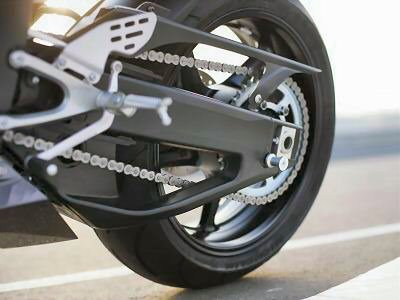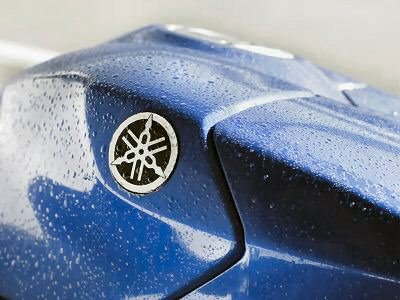An evolving story of daily two-wheeled adventure in India... or something like that
Oct 18, 2006
250 Posts: official notice
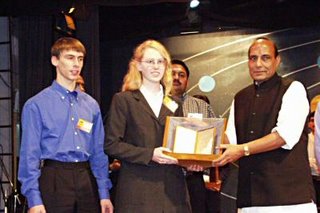 NooseToday, Mumbai,
NooseToday, Mumbai,October 14, 2006:
It's official. rearset's fledgling
The blog was always intended as a place where rearset could
Commenting on future plans, rearset said, 'gimme another beer.' When NooseToday finally managed to get the
As rearset was being dragged to the door of the upmarket pub where this
For those who are still
Riding Mantra #006.78
"Somedays we are the flies. Somedays we are the windshields"
- Maharishi Phucknuckel's Guide to Zen, apparently
- Maharishi Phucknuckel's Guide to Zen, apparently
Calvin & Hobbes: Washington Post Article
 Click here to read an article about Calvin. It isn't a new article, but a close friend sent me the link again and I could not help but post up. Was very tempted to put up the full text, but I think just an excerpt should do it.
Click here to read an article about Calvin. It isn't a new article, but a close friend sent me the link again and I could not help but post up. Was very tempted to put up the full text, but I think just an excerpt should do it.Excerpt from
The Tiger Strikes Again After an Early Bedtime, Calvin and Hobbes Are Up and Running in a New Collection By Neely Tucker, Washington Post Staff Writer Tuesday, October 4, 2005; Page C01
In the middle of class, Calvin's teacher suddenly turns into a pig-snouted monster! The drooling blob demands attention and homework!
"Chew electric death, snarling cur!" Spiff howls, blasting her face off with his Atomic Napalm Neutralizer! He was known to wear little rocket ship underpants. He feared nothing but the babysitter. Also the dark.
The strip ran from 1985 to 1995. Thirty million people have bought earlier collections of the strip, but as of today you can buy it all in one pop. It will set you back $150, but the three-volume, glossy-papered tome finally gives proper appreciation and display to creator Bill Watterson's efforts, the kind of size and color quality that he waged such epic battles for with newspapers and syndicates before retiring into silence at age 37, tired of the fray, wary of drifting into the bankrolls of mediocrity.
Oct 17, 2006
Positioning yourself
I'd just posted up on positioning yourself on the bike sometime ago. Now I found this at Aprilia's site.
The original article is hereRIDING TECHNIQUE: RACING
Correct rider positioning is without a shadow of doubt the single most important factor contributing to success in competition riding. Only if correctly positioned can the rider’s body perform the balancing function essential to performance and safety.
It might seem obvious to state that motorcycle handling is totally different to car handling, but a thorough understanding of exactly why it is so different is fundamental to comprehending the dynamics of motorcycle handling. Car driving is totally passive: you sit comfortably in your seat, turn the steering wheel and the car does the rest. Your car is in a state of stable equilibrium, i.e. it remains upright unassisted. Your motorcycle is not: it moves in a state of unstable equilibrium and the speed at which you can negotiate bends is determined by complex physical laws.
It is easy to see that a rider plus his machine add up to form a single mass. The rider’s weight (averaging around 90 kg when full race gear is worn) makes up a large percentage of the total weight of this man + machine system. The rider’s position therefore plays a major role in correct handling, speed and safety. That is why riders shift their position so frequently when maximum performance is required during a race. Race riding is really constant succession of acceleration, high speed travel, braking, and turning. Under most of these conditions the motorcycle is subjected to a shift of load from the front to the rear or vice-versa or from the left to right or vice-versa. During all these load shifts, the rider’s body can and must act to maintain stability. Motorcycle racing is therefore an intensely physical sport, with nearly every muscle in the body in use.
On a twisty circuit, riders have virtually no time to stay still but have to shift their body almost constantly. So why in particular do riders have to lean in over their bikes on bends? Simply to negotiate them at the highest possible speed without falling off. The inward and downward body shift that we see when race riders tackle bends lowers the bike’s centre of gravity (the theoretical point to which all physical forces can be related) and makes the bike more stable as it travels around the bend. In simple terms, the bike’s own centre of gravity is fixed and unchangeable. You, however, can move your own centre of gravity. You can therefore shift the centre of gravity of your man + machine system by changing your own position. You can negotiate bends at the highest possible speed by moving your weight to the inside of the curve and lowering the centre of the gravity of your man + machine system. This avoids you having to lean your bike to its physical limits.
Another rider going around the same bend at the same speed without hanging into the curve would have to lean his bike at a far more acute angle, with far greater risk of falling off. More acute angles of lean reduce the contact area and consequently the grip between tyres and track. Hanging into a curve is therefore essential to effective race riding, even more so at high speed. The same principles apply to acceleration and braking. During fierce braking, the bike’s weight is thrown on to its front wheel, and the rear wheel tends to lift. By moving your weight (and consequently the centre of gravity of your man + machine system) further back, you compensate for this shift in load.
Under acceleration the opposite occurs and the bike tends to lift its front end. To counteract this you must therefore move your weight as far forward as possible. To safely achieve maximum speed under race conditions, the successful rider must therefore shift his position constantly.
Hero Honda CBZ X-Treme: Go naked!
 Have been thinking about the styling of the CBZ X-Treme. Realised that we're looking at the ugliest fairing ever to grace an Indian motorcycle. However, a (2006) Hornet-like front end, with a tightly packed instrument cluster and headlamp would probably look damn good on the bike and will take away some of the styling boo-boos. The other part I would change instantly is the funny X on the rear panel. Looking at the bike from the right side, just removing the <>< would instantly make it look hefty and clean. Still not gobsmacking, I agree, but a hell of a lot more presentable. Missed opportunity?
Have been thinking about the styling of the CBZ X-Treme. Realised that we're looking at the ugliest fairing ever to grace an Indian motorcycle. However, a (2006) Hornet-like front end, with a tightly packed instrument cluster and headlamp would probably look damn good on the bike and will take away some of the styling boo-boos. The other part I would change instantly is the funny X on the rear panel. Looking at the bike from the right side, just removing the <>< would instantly make it look hefty and clean. Still not gobsmacking, I agree, but a hell of a lot more presentable. Missed opportunity?
 This illustration appeared in the Times of London accompanying a story about how the Earth would do if we all collectively left. What can I say, it appears that no one will miss us. And within the space of a few decades, Mother Nature will have regained her paradise. Er... which does not mean we need to pollute more, so as to mark our territory/passing more deeply.
This illustration appeared in the Times of London accompanying a story about how the Earth would do if we all collectively left. What can I say, it appears that no one will miss us. And within the space of a few decades, Mother Nature will have regained her paradise. Er... which does not mean we need to pollute more, so as to mark our territory/passing more deeply.I would like to have posted the link to the article, but apart from tracing the graphic to the times website, I am unable to locate the article that went with it... sorry. Oh, and I came upon the graphic at Gizmodo.
Oct 16, 2006
Racecraft
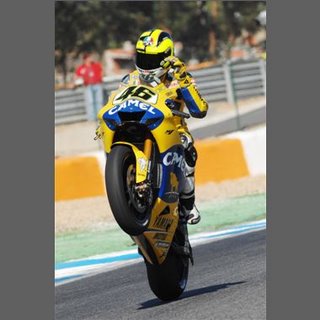 In the beginning of the race yesterday, I got a bit carried away and moments after the lights, I screamed, 'Go on Dani, take Hayden out.' The Wife gave me the full complement of rolling eyes. Moments later, that very thing happened. However, I'm no longer convinced that all of the bigger motorsport isn't as fixed as the c_____t game. Then again, Hayden, I lip read, screamed in his frustration, 'I can't believe this, this was supposed to be my year!.' Ahem. Who is willing to bet that Rossi crashes out of the next race and Hayden still wins the title.... On the other hand, another interesting thing was noticed. When Rossi was 12 points behind, it was all, 'Rossi is closing in on Hayden and the American/Kentucky Kid will have to play it smart to win the title.' Now that the Hayden is 8 points behind, the official line is, 'Oh no, poor Hayden, he has lost the championship for no fault of his own.'
In the beginning of the race yesterday, I got a bit carried away and moments after the lights, I screamed, 'Go on Dani, take Hayden out.' The Wife gave me the full complement of rolling eyes. Moments later, that very thing happened. However, I'm no longer convinced that all of the bigger motorsport isn't as fixed as the c_____t game. Then again, Hayden, I lip read, screamed in his frustration, 'I can't believe this, this was supposed to be my year!.' Ahem. Who is willing to bet that Rossi crashes out of the next race and Hayden still wins the title.... On the other hand, another interesting thing was noticed. When Rossi was 12 points behind, it was all, 'Rossi is closing in on Hayden and the American/Kentucky Kid will have to play it smart to win the title.' Now that the Hayden is 8 points behind, the official line is, 'Oh no, poor Hayden, he has lost the championship for no fault of his own.'I still root for Rossi, though. And who, the heck, is Tony Elias?
Body position
Tomorrow, when you're out riding, try this. Tuck your feet in by placing the balls of your feet on the pegs and letting your heels touch gently against the subframe. Hunch you back and lean forward so that your elbows bend and bring your forearms parallel to the ground. Now, clench the tank tightly with your thighs and at the same time, clench your stomach muscles. This will take a significant amount of weight off your wrists. Now, focus back on the bike and you will suddenly notice it feels lighter, more agile, and more tactile. This isn't the easiest way to ride around, but it certainly is magical in how it changes the bike feels. The harder you hug the bike with your legs, and the more weight you can take off your wrists, the better this will feel.
Oct 14, 2006
Braking: How to use the front disc effectively
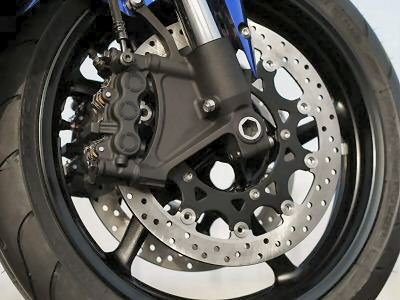 A colleague who just started riding motorcycles recently had another crash. So what else is new? But, this time, he came and asked for help. His exact words were, 'every time I brake, I skid. I fall. Help!' I assume that there are more people out there who're having a struggle with disc brakes. For those who don't, kindly skip. This is a long post, so I'm splittin' it up.
A colleague who just started riding motorcycles recently had another crash. So what else is new? But, this time, he came and asked for help. His exact words were, 'every time I brake, I skid. I fall. Help!' I assume that there are more people out there who're having a struggle with disc brakes. For those who don't, kindly skip. This is a long post, so I'm splittin' it up.What are they?
To start from the basics. Disc brakes are usually mounted on a light carrier with a steel rotor (MotoGP bikes use carbon fibre in the dry only). A calliper, hydraulically operated, presses a set of abrasive pads against the rotor when you pull the lever in towards the handlebar grip. This burns off kinetic energy by converting into heat and slows the bike down. As of today, disc brakes form one of the most common forms of motorcycle retardation systems. Other popular systems include helmet-less riding (a self-curing problem).
Disc brakes, while extremely effective, do have flaws. Problems include sharp bite and grabbiness at low speed which tend to frighten and/or crash beginners. The trick is to operate the front brake with the conscious knowledge that it is by far the most powerful feature of the motorcycle. Your engine cannot even come close to the levels of power that lever can generate. All in a few mm of movement.
There is, of course, only one way to learn how to use the brake: practice. And here's what I practiced until I felt happy with my braking distances.
I'll separate the exercise into two or three simple exercises for erm, simplicity.
Other sites on this subject:
Other posts on this subject:
Braking: Exercise One - Smoothness
 Exercise 1: Smoothness
Exercise 1: SmoothnessThe intention of this exercise is smoothness. It focusses on being smooth with the lever, rather than finding the limit of its awesome power. So don't bother with extreme squeezing. At least for now.
What you do is find a deserted piece of clean tarmac and get all your safety kit on. That's EVERYTHING - I wear boots, riding pants, jacket, gloves and helmet - whenever I do any riding. Especially if I am practising skills.
Now, get up to about 60 kph and roll of the throttle. You want to brake smoothly to a stop. Initiate braking with a gentle (very gentle) dab on the rear brake. The dab should just get the front suspension collapsing and the weight transferring forward (you should feel this as a lowering of the front end and more weight on your arms). Once the weight has started transferring forward, you want to start using the front brake and release the rear brake until only a very, very tiny amount of rear brake is on.
The crucial thing to remember is to not use the brake faster than the weight transfer. As in, the application should not cause the suspension to dive noticeably further. Just before stopping, you will try to ease the rear brake back on and release the front brake progressively. If you do it right, your front suspension should depress progressively. There should not be any sudden or drastic change in the amount by which the stanchions disappear into the fork bottoms.
If you're pogo-ing the suspension, you're trying to hard. This exercise is about smoothness, not braking distance. So don't worry about how far you're going before you need to stop.
What you want to focus on is feeling the weight building up in the front fork. And then matching that build up with pressure on the lever. Tip: Move your hand like it is in slow motion through out the exercise - as in roll on the throttle slowly, get on the front brake slowly and ease of slowly as well. Go slow. The front disc can build force so quickly, and with so little movement, that you don't really need fast fingers for fast stops. Remember, as Nick Ienatsch said in his book, 'fast bike, slow hands.'
Once you become good at keeping with weight transfer, you will want to experiment with changing the rate of weight transfer and then keeping up with it. In this case, do use the rear brake to start the weight moving forward, but do not, repeat, do not use the rear brake to change that rate. As the rear end of the bike gets lighter (weight moves forward) it becomes easier to lock the rear wheel (which is why, in the middle of the braking process, we avoid the rear brake as far as possible).
Braking: Exercise Two - Faster
 Exercise 2: Faster
Exercise 2: FasterOnce Exercise 1 becomes easy to do, try stopping earlier without losing the smoothness. This is not easy. Repeat, it will take a lot of work. But work at it. Remember you are not going to grab the front lever and stop. That is what causes the skid and the fall.
Lemme quickly explain why. Traction is a combination of friction (if you don't know that word, look it up) and weight. While friction is more or less constant in a given situation, adding weight can raise the amount of available traction. Let me give you an example. Make a namaste with your hands and start rubbing them together, moving the palms up and down against each other. As long as you don't try to press the two together, this is easy (friction constant, weight low = low traction). The moment you start pushing them into each other, you will find it harder to do (friction constant, weight high = high traction).
When the weight transfers forward on the motorcycle, it gives the front tyre more traction. And so, you can use the front disc harder. But not before the weight has transferred. Which is why the first exercise is about keeping up (and not outrunning) the weight transfer.
Again, roll out at 60 kph and just do everything smoothly, but harder so as to stop earlier. Again, stopping earlier than exercise 1 is good enough for the moment. Don't rush into exercise three.
Braking: Exercise Three - Harder
 Exercise 3: Panic braking
Exercise 3: Panic brakingNote: This is a dangerous exercise, with a far more real chance of a crash than the other two. I recommend having a friend or friends around when trying it and do not accept any liability for damage or inconvenience caused.
A good idea is to do exercise 3 once, then do exercise 1 once, and only then try a type 3 run again.
Walk out on the tarmac and draw a line. This will be the point when you start braking. Do a few exercise 2 and 1 runs until your tyre and hands warm up the idea of hard exercise. Only then, will you be ready for 3.
Now, the idea is simple. Pick a speed. Say 60 kph. Approach the line at 60 kph in any gear you like and stop as early as possible. As you repeat the runs, you will soon find that you can actually stop a bit earlier each time. When you feel the rear wheel beginning to lift off the ground (all disc braked bikes, more or less, are capable of this), you are reaching the limit of front braking).
- Tip: A very slight amount of rear brake pressure can make the bike feel stable. But that also raises the risk of rear lock up. If the rear does lock up, ease up the tiniest bit on the rear brake to fix the problem. Look up and far ahead, this tends to keep the bike more or less in line for the longest time.
- Tip: Listen to the front tyre. Its howling and the pitch of that sound is usually a good indicator of how close to the limit you really are.
- Tip: Notice the skid marks you will be leaving behind. You're looking for a faint grey skid mark, this front-end skid mark is a sign that you're on the threshold. If you can put one down at will, you've got the hang of it.
Braking: Summary
 In summary
In summary- Do not, repeat, do not grab the front brake, it's an assured fall
- Do not stay on the rear brake when braking hard with the front, you will lock up your rear and go down
- Use the rear brake is mild quantity to smooth the transition from acceleration to braking and from braking to a dead stop. If you do this well, you should not rock in the saddle
- Practice makes perfect
- If anyone tells you that the maximum braking on a motorcycle comes from the rear wheel, tell them to go fly a kite.
- Learn to trust and respect the front brake. It's the only thing that's going to stop you.
- Motorcycle Braking: 15 Questions and Answers - webBikeWorld
- Motorcycle Riding Skills Series Hard Braking Tips - Sport Rider
Oct 13, 2006
Blogger, he knows me!
Oct 11, 2006
 Finally, the full dope on the Bajaj Pulsar 180 DTSi Limited Edition.
Finally, the full dope on the Bajaj Pulsar 180 DTSi Limited Edition.The bike:
The Limited Edition is exactly identical to the normal 180 except for
- Orange colour paintjob
- Chrome stickering on the tank ('Pulsar') with Limited Edition printed below
Bajaj is offering the Limited Edition (I'll just call it DTSiLe) as an auction. The reserve price for the auction is Rs 70,000 (ex-showroom price). Prospective owners are required to fill out a bid form. The chap with the biggest wallet wins the day. I hear something about any extra money earned beyond the reserve price being given away to a charitable cause. This makes the bike about Rs 78,000 on-road (at reserve price) in New Bombay
How many:
There will be a total of 90 DTSiLes sold around the country. Each Pro-Biking dealer will receive between one and two bikes for sale depending on the town profile, sales record and similar criteria.
Other:
The normal 'Phatom' DTSi 180 will be available in the usual colours, including the all-black, red and blue shades. These are priced at the same price point as the outgoing (older) 180. Which means any dealer quoting (I've heard two) a premium price over the previous model is overcharging you.
Oct 10, 2006
Limited Phantom revealed
 While I was original led to believe that the Limited Edition 180 DTSi (aka Phantom) was just a limited edition in name, without any cost or performance implication, it appears that I was shown the straight road while Bajaj took a sharp, sharp left. The Limited Edition, in fact, is limited in numbers. To clarify the doubts: The Limited Edition Phantom only comes in orange, has chrome stickers on the tank and is otherwise identical to any other Phantom. Repeat, only the orange colour is the limited edition.
While I was original led to believe that the Limited Edition 180 DTSi (aka Phantom) was just a limited edition in name, without any cost or performance implication, it appears that I was shown the straight road while Bajaj took a sharp, sharp left. The Limited Edition, in fact, is limited in numbers. To clarify the doubts: The Limited Edition Phantom only comes in orange, has chrome stickers on the tank and is otherwise identical to any other Phantom. Repeat, only the orange colour is the limited edition.Each pro-biking dealer (Bajaj's hi-po showrooms) will be allotted one of these oranges, and they will be allowed/encouraged to auction the bike off. Take my word for it, get a black one.
CBZ X-Treme: What the enthusiasts are saying
 To the owners of the various lists featured, my humble apologies, but your members are just too funny. Please excuse. If you have serious objections, kindly leave a comment, and I will promptly remove the offending bits (er... please point out which bits are offending you)
To the owners of the various lists featured, my humble apologies, but your members are just too funny. Please excuse. If you have serious objections, kindly leave a comment, and I will promptly remove the offending bits (er... please point out which bits are offending you)- What next? Purple color engine? - Navendu Singh/BajajPulsar
- The Surgeon General has determined that sniffing glue while pasting stickers
is harmful to your brain - gr/BajajPulsar - But the whole package is disappointing!
Brilliant components put together in a not-so-attractive package and
trying to rub off by being called a legend - Glifford/BajajPulsar - I feel like peeling off that CBZ sticker from its tank - Nitin Nath/HeroHondaCBZ
- Nothing as exciting or ground breaking as the original CBZ or the Pulsar - Sanjay Poojari/BajajPulsar
- Looks more like a marketing strategy rather than an attempt to revive
a legend. its sad. - Nikhil Bhaskaran/BajajPulsar
And here is what isn't obvious. Yes, a riding impression
- The engine feels very, very torquey, and has not lost the great refinement and trustworthy feel of the Unicorn and the Achiever, but seems to be have even more guts
- However, the top end still feels a bit weak. I didn't have the opportunity to ride it back to back with the competition, but while I'm more or less sure it will decimate the Apache (the quickest to 60 kph right now), I'm not sure who gets to 100 kph first, the Pulsar, the Apache or the CBZX. And one must remember, the current Pulsar is only 143.9cc, which means it can still cash a 6cc cheque it's been hiding under its mattress... bets, anyone?
- Chassis feels quick and lithe, but since I didn't have access to any high speed sweepers, I have no way of talking about stability
- I was told that the chassis was all-new though. Something I'm not so sure of. I'm thinking of a Achiever based thingy
- Wheels and tyres are Karizma-spec. Exactly
- The two test ride bikes I had access to sported some of the spongiest disc brakes I have so far has the displeasure of applying. Nearly holed the showroom compound gate because I wasn't expecting the sponge
- Sitting on the bike, you do end feeling a bit tall.
- Its ugliness is less obvious from the saddle. Thank god
- Price seems a bit on the high side
- Wheelies damn easily thanks to the torque, though.
Review: Barbeque Nation
The Wife and I wafted into the place and instantly liked it. We sat outside (the grill in on your table, the people who chose the ac section were all smoked out in minutes). The menu is fixed, and so is the charge (Rs 400/pax). You get a choice of five vegetarian and five non-vegetarian starters in unlimited quantities. And this is the meat of the meal. Really. Drinks are extra, of course, and the main course, a fairly limited buffet is just crap. Just a way to saw money by offering a basic spread.
But. There is a big but involved. The starters range from delicious to okay, are unlimited and there's no one pushing you to finish early. There also happens to be good Rajasthani folk/trance remixed music that sounds good.
So. This is the perfect place to go with your friends and chill out. Just remember to eat the starters as the main course and you'll be fine. To have a really great time, ask for Deric. He's a fantastic waiter.
But. There is a big but involved. The starters range from delicious to okay, are unlimited and there's no one pushing you to finish early. There also happens to be good Rajasthani folk/trance remixed music that sounds good.
So. This is the perfect place to go with your friends and chill out. Just remember to eat the starters as the main course and you'll be fine. To have a really great time, ask for Deric. He's a fantastic waiter.
Barbie dyxlesia
2007 R1 Released: The juicy details
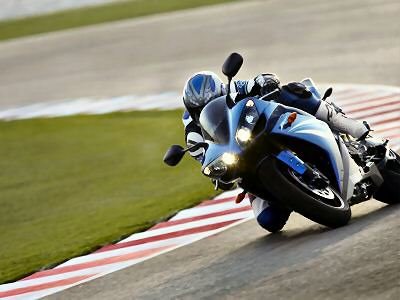 Here are the big details, in Yamaha's words:
Here are the big details, in Yamaha's words:New YCC-I (Yamaha Chip Controlled Intake)
The latest and most innovative product of the Yamaha G.E.N.I.C.H. engineering concept is YCC-I, which makes its debut on the 2007 YZF-R1, and is the first-ever electronically-controlled motor-driven variable intake on a production motorcycle. For over fifty years Yamaha have been at the forefront in the development of exciting new motorcycle technology, and the new YCC-I Yamaha Chip Controlled Intake system represents one of the most significant developments in electronic control ever seen in the supersport engine sector.
The intake passage length on an engine is designed to ensure the highest volumetric efficiency in the most commonly used rpm band for that particular powerplant. Generally speaking, a long intake passage and funnel tends to deliver stronger low to mid-range performance, and conversely a shorter intake passage and funnel is typically better for high rpm applications.
During the intake process on any four-stroke engine, the downwards motion of the piston creates negative pressure in the intake passage, which causes a pressure difference with the air and its natural inertia. This pressure difference causes a reverse reaction in the direction of the intake valve in a function known as ‘inertial charging’, and this phenomenon increases the engine’s volumetric efficiency.
The shorter intake design produces a faster beat to the pressure wave which optimises volumetric efficiency, while a longer intake leads to a slower pressure wave beat. Yamaha’s designers have succeeded in creating YCC-I, a unique new electronically-controlled intake system which ensures optimum performance at both low and high engine speeds.
The YCC-I system features electronically-controlled variable intake funnels, and is the first electronically-controlled motor-drive system ever used on a production motorcycle. This unique system features four lightweight plastic resin funnels which are divided into an upper and a lower section, and while fully connected, the two sections create a funnel of 140mm in length.
However, when the new R1 engine reaches a specific rpm – and the throttle opening also exceeds a certain level – the upper and lower funnels separate to create a shorter intake funnel of 65mm in length. The pre-programmed separation of all intake four funnels is simultaneous, and is driven by an electronically-controlled servo motor.
In effect, the new R1 engine is a true ‘no compromise’ design which is able to deliver highly efficient performance in a wide range of riding conditions. Riding around town at lower rpm, the 998cc engine is operating with its long 140mm intakes, which give strong torque and excellent throttle response. And once the rider increases the engine speed and throttle opening on fast highways or when circuit riding, the intake length is instantaneously reduced to 65mm, allowing the engine to reach its full potential.
Another advantage of the new YCC-I system is that its structure is minimal and simple, giving optimal reliability combined with low weight.
New YCC-T (Yamaha Chip Controlled Throttle)
In 2002 the R1’s fuel injection featured an innovative suction-piston system, and the fourth-generation 2004 R1’s fuel injection benefited from an electromotor driven sub-throttle valve. Now, in the never-ending quest for ever-greater levels of performance from the fuel-injected R1 engine, we have focused our attention on intake air volume control.
For 2007 the all-new R1 is equipped with our widely-acclaimed YCC-T electronic throttle which, combined with the new YCC-I and advanced fuel injection systems, helps to achieve outstanding torque and instant throttle response, from idle right through to the red line.
The YCC-T system makes for an even simpler structure in the intake passage compared to previous mechanical air-control systems (suction piston/sub-throttle valve), and this has enabled Yamaha’s engineers to fit a shorter intake for increased high-rpm performance. And because the R1’s new YCC-I system enables the intake funnels to operate at their full 140mm length at lower revs, and at a shorter 65mm length at higher engine speeds, the benefits of the YCC-T electronically-controlled throttle are accentuated.
The advanced YCC-T technology was used to great effect on Valentino Rossi’s MotoGP Championship-winning Yamaha YZR-M1 race bike, and made its successful production bike debut on the 2006 R6. The system senses various aspects of the R1 rider’s throttle operation, and the ECU instantly adjusts the throttle valve opening to the optimum setting by means of a motor drive.
The ECU features a 3 high-speed microcomputers capable of reading changes in throttle parameters at a rate of 1000th of a second. This ensures smooth, instantaneous and linear operating characteristics in response to the slightest input from the rider.
The advantages of the YCC-T system have already been demonstrated on the 2006 YZF-R6 which has been widely acclaimed for its superb throttle response. Now, with the introduction of YCC-I, our engineers have been able to create a fifth-generation R1 that offers abundant torque right across the rev range.
After intensive research and development, we programmed the Y-CCT to complement the substantial performance gains associated with the new Y-CC-I intake system, and the result is a remarkably linear torque curve for increased real-world performance and even higher levels of man-machine harmony.
New slipper clutch
The new R1 is designed to deliver the ultimate supersport experience on both the road and circuit, and in order to ensure a smoother approach to the apex of turns, a slipper clutch is fitted. This system shares the same structure as that found on the limited-edition 2006 YZF-R1SP model, and is designed to limit the amount of back-torque transmitted from the rear wheel through to the crank. This race-developed system improves traction during rapid deceleration and hard braking, and enhances engine and transmission reliability.
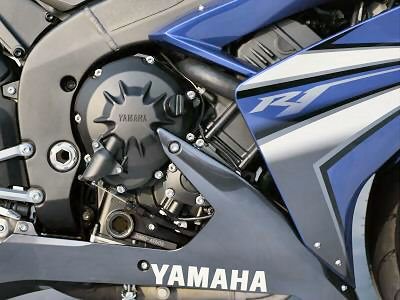 Engine Technical Highlights
Engine Technical Highlights- New liquid-cooled 4-stroke in-line 4-cylinder engine
- Bore x stroke 77 x 53.6mm
- Higher 12.7:1 compression ratio
- New YCC-I (Yamaha Chip Controlled Intake) variable intake funnel – the first ever electronically-controlled motor-driven system on a production motorcycle
- New YCC-T (Yamaha Chip Controlled Throttle) electronic throttle
- New 4-valve cylinder head design
- Titanium intake valves
- Redesigned combustion chamber
- Slipper clutch
- Reshaped dual upswept mufflers
- High performance ignition coils
- 3-way catalyser with oxygen sensor
- Closed-deck cylinder
- Liner-less plated cylinder
- FS (Fracture Split) connecting rods
- More efficient Forced Air Intake system
- Compact EXUP with titanium valves
- New-shape twin-fan radiator
New design hybrid swingarm
Complementing the all-new Deltabox frame is a newly designed swingarm which features an asymmetric left/right layout, and consists of an upside-down truss configuration. This new swingarm is manufactured from three different types of aluminium components: gravity-cast parts for the pivot assembly box structure; Yamaha CF die-cast parts for the main rear arm; and forged aluminium for the end sections.
This new swingarm has primarily been designed to enhance cornering performance, firstly by enhancing handling qualities in the initial stage of a turn – and secondly, by increasing the rear wheel downforce on the road surface when accelerating away from a turn.
In order to achieve these goals our designers have made significant changes to the torsional and lateral rigidity balance of the new swingarm. Compared to the 2006 R1, the torsional rigidity of the new swingarm has been increased by 30%, while at the same time the lateral rigidity has been slightly reduced.
In addition to the revised rigidity balance, the pivot height has been raised by 3mm compared to the 2006 model, and this feature helps to minimise the ‘squat’ effect of acceleration-induced chain tension. And the design of the new swingarm also facilitates the use of the new exhaust system which passes to the right side of the upside-down truss assembly.
- All-new Deltabox frame
- Redesigned hybrid asymmetric swingarm
- 3mm higher swingarm pivot axis
- New-design high-performance front forks
- Higher specification rear shock with 2-way compression adjuster
- New high-rigidity lower triple clamp
- High performance 6-pot front brake calipers
- Lightweight 310mm diameter front discs
- All new front cowl, seat and tail cowl
- Increased air intake capacity
- More efficient dissipation of heated air from engine
- 4-bulb dual headlights
- LED taillight
- New rear fender with separate license plate holder
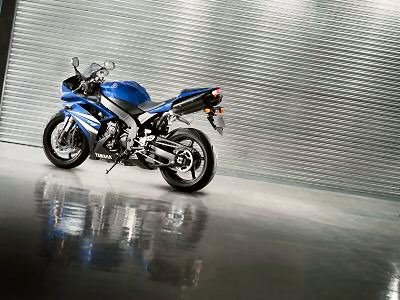
2007 R1 Released: Official Specs
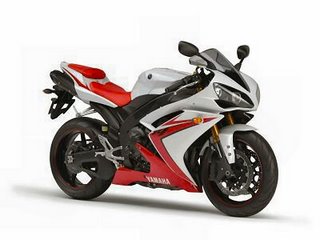

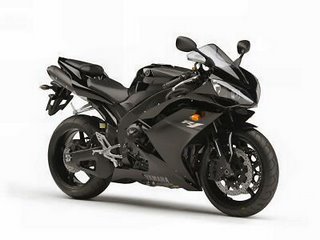

| 2007 TECHNICAL SPECIFICATION | YZF-R1 |
| ENGINE | |
| Type | Liquid cooled, 4-stroke, DOHC, 4-valve, forward inclined, |
| parallel 4-cylinder | |
| Displacement | 998 cc |
| Bore & stroke | 77.0 x 53.6 mm |
| Compression Ratio | 12.7:1 |
| Max. power (without direct air induction) | 132.4 kW (180 PS) @ 12,500 rpm |
| Max. power (with direct air induction) | 139.0 kW (189 PS) @ 12,500 rpm |
| Max. torque (without direct air induction) | 112.7 Nm (11.5 kg-m) @ 10,000 rpm |
| Max. torque (with direct air induction) | 118.3 Nm (12.1 kg-m) @ 10,000 rpm |
| Lubrication | Wet sump |
| Carburettor / Fuel supply | Fuel injection |
| Clutch type | Wet multiple-disc coil spring |
| Ignition | TCI |
| Starter system | Electric |
| Transmission | Constant mesh, 6-speed |
| Final transmission | Chain |
| Primary reduction ratio | 65/43 1.512 |
| Secondary reduction ratio | 45/17 2.647 |
| Gear ratio: | |
| Gear ratio-1st gear | 38/15 2.533 |
| Gear ratio-2nd gear | 33/16 2.063 |
| Gear ratio-3rd gear | 37/21 1.762 |
| Gear ratio-4th gear | 35/23 1.522 |
| Gear ratio-5th gear | 30/22 1.364 |
| Gear ratio-6th gear | 33/26 1.269 |
| CHASSIS | |
| Frame | Aluminium die-cast Deltabox |
| Front suspension | Telescopic forks, Æ 43 mm |
| Front wheel travel | 120 mm |
| Rear suspension | Swingarm |
| Rear wheel travel | 130 mm |
| Caster angle | 24° |
| Trial | 102 mm |
| Front brake | Dual discs, Æ 310 mm |
| Rear brake | Single disc, Æ 220 mm |
| Front tyre | 120/70 ZR17MC (58W) |
| Rear tyre | 190/50 ZR17MC (73W) |
| DIMENSIONS | |
| Overall length | 2,060 mm |
| Overall width | 720 mm |
| Overall height | 1,110 mm |
| Seat height | 835 mm |
| Wheelbase | 1,415 mm |
| Min. ground clearance | 135 mm |
| Dry weight | 177 kg |
| Fuel tank capacity (reserve) | 18 litres (3.4 litres) |
| Oil capacity | 3.83 litres |
Oct 9, 2006
Hero Honda CBZXtreme: Launch Release
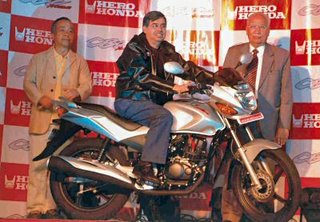
Like I promised, here is the launch release and images
====
====
HERO HONDA UNVEILS ALL-NEW ‘CBZ X-TREME’
Strengthens Presence and Focus on the Premium Segment
- 150cc, 14.2 BHP powerful engine
- Highest acceleration in the segment: 0 – 60 kmph in 5 seconds
- New model comes with a 3-year / 40,000 kms warranty
- CBZ X-treme to enhance Hero Honda’s image as a
youthful and technology-driven company
- LED Tail Light – first time ever on any two-wheeler in the country
- Split Rear Grip, again a first-time feature in motorcycles in India
- Black Alloy Wheels
- Front Disc brakes
- Aircraft type Fuel Tank Lid
- Wide 100/90 low aspect ratio rear tyre for additional road grip and safety
- Dark grey colour engine
- Integrated tail light and winkers
- Front winkers integrated with the visor
- Pilot lamps positioned above the head light
- Sculpted & Sharp Rear Cowl
- Brushed steel console panel finish
- Contoured seat
CBZ X-treme, with a 150 cc engine, stunning design and best-in-class features, carries forward the lineage of Hero Honda CBZ, the immediate synonym of stylish bikes for many.
 As a true market leader, Hero Honda was the first two-wheeler manufacturer in India to introduce a bike on the style platform, with the launch of the Sleek, way back in 1989. The company further consolidated this position with the launch of the CBZ in 1999. The CBZ motorcycle immediately won the hearts of customers, many of whom till this date continue to swear by its performance and style. CBZ X-treme, keeping up Hero Honda’s tradition of innovation, is a result of extensive market research and customer feedback and has been specially developed for the true connoisseurs of style and performance.
As a true market leader, Hero Honda was the first two-wheeler manufacturer in India to introduce a bike on the style platform, with the launch of the Sleek, way back in 1989. The company further consolidated this position with the launch of the CBZ in 1999. The CBZ motorcycle immediately won the hearts of customers, many of whom till this date continue to swear by its performance and style. CBZ X-treme, keeping up Hero Honda’s tradition of innovation, is a result of extensive market research and customer feedback and has been specially developed for the true connoisseurs of style and performance.Unveiling the CBZ X-treme here today, Mr. Pawan Munjal, Managing Director and CEO, Hero Honda Motors Ltd., said, “The launch of CBZ X-treme is a landmark event in the Indian two-wheeler industry, which is going to completely revolutionize the biking experience of the GenNext bike enthusiasts in the country. The CBZ X-treme will offer an exhilarating biking experience to riders.
“We also have a slew of new products across categories lined up to hit the roads in the next few months. So rev up and stay tuned for further news from Hero Honda,” he added.
CBZ X-treme has been jointly developed by Honda R&D in Japan, India and Hero Honda R&D. The new motorcycle addresses the aspirations of customers preferring a higher cc motorbike. Its 150 cc engine with 5-gear transmission promises to deliver the best overall performance in the segment. Performance features like best-in-class acceleration, power delivery and top-speed are the best ever experienced in the 150 cc segment.
Hero Honda CBZ X-treme will be immediately available for test drives and bookings through the company’s wide network of dealers. It would be available commercially by the end of this month
CBZ X-treme will be offered in a range of five attractive colours including the all-new vibrant blue metallic and sports red; candy blazing red, black and boon silver. The CBZ X-treme comes in two variants - disc/kick and disc/self.
The motorcycle is attractively priced at Rs 54,500/- (Disc Kick version) and Rs 56,500/- (Disc Self version) ex-showroom Delhi.
Hero Honda CBZXtreme

Here is what I've got so far
- 150cc, based on Unicorn engine
- Black painted motor
- More or less the same chassis as the Achiever
- Karimza wheels and tyres
- Split grab rail
- LED Tail lamp
- Er... styling
Er... What happened?
Oct 5, 2006
Cogito Ego Zoom!
And then there is other curse of the motorcyclist: ego. Being a fan of Rand, I realise (and subscribe to) the philosophical tenets of ego being a primary driver for humanity. But still, while I refuse to acknowledge modesty and humility as automatic virtues, ego can kill motorcyclists.
Assume you are out riding with a new group of people and realise that the group has one of two 'greats.' People who are recognised for and clearly demonstrate a superior skill level. At a track, this could be a set of riders who clock faster laps almost without trying. On the street, these are the people who always appear to be ahead of you, no matter how you try. If you're a fairly normal sort of guy and a serious rider, it can quickly become a situation where you want to follow them to learn or pass them to feel great.
This is where ego comes into clash with restraint. Your ego says, 'You're better than that guy, come on, let's show him.' Restraint says, 'your skill level is not at that level, you'd just better get on with what you're doing and do that well.' When the former takes over, you end up riding out of your skin and open yourself to a world of errors and near-misses, not a place you would normally like to be in. But do you have the maturity to realise that and take appropriate action?
Assume you are out riding with a new group of people and realise that the group has one of two 'greats.' People who are recognised for and clearly demonstrate a superior skill level. At a track, this could be a set of riders who clock faster laps almost without trying. On the street, these are the people who always appear to be ahead of you, no matter how you try. If you're a fairly normal sort of guy and a serious rider, it can quickly become a situation where you want to follow them to learn or pass them to feel great.
This is where ego comes into clash with restraint. Your ego says, 'You're better than that guy, come on, let's show him.' Restraint says, 'your skill level is not at that level, you'd just better get on with what you're doing and do that well.' When the former takes over, you end up riding out of your skin and open yourself to a world of errors and near-misses, not a place you would normally like to be in. But do you have the maturity to realise that and take appropriate action?
Restraining order
At some point in my blog, I have already talked about the rider's mind as a place where a ot can happen, good and bad. What Pridmore talks about hits that very nail on the head. His point is that while riding fast and all of that is great and thrilling, a mature rider must know when to use restraint. As in, the good rider knows when to back off. When the risk of doing what he is about to, is too much risk.
I realise that 'too much risk' is a fairly ambiguous term. I only agree to that when you apply it liberally. When taken at an individual level, it's a clearly defined thing. Would you race another rider on the street? While getting to work? Each of you can aswer that question without ambiguity. I'd only take that on in certain situations. And to clear the air, I'll define that situation. Ambient situation first: good weather, clean roads and light traffic are essential. Specifics? No racing with people I don't know. That means if I don't know how you ride, I won't respond. I'll happily go for a round who gets there first with riders who I know for sure won't do anything stupid. Which does make it safe, I know. But it becomes a more calculated risk. Which, in itself, may be too much risk for some. Second, the first time I see the other rider make a move I wouldn't (select a narrow gap, break a red or any such) the race is off. In most cases, I've ridden at a fast clip through traffic where the intention is for the both of us to get there quickly, rather than actually 'win.'
So what is restraint? In the above situation, it is stopping for pedestrians etc despite the self-imposed urgency. It is not losing sight of your essential traffic skills - positioning, visibility, speed control and the normal aversion to stupidity. Restraint is what you do when you listen to that inner voice and don't do that silly thing. The inner voice is within us all, and usually won't lead you astray, so listen to it. I do.
For those about the post about the dangers of street racing. I emphatically reiterate that I am against it. Sometimes, it's a convenient way to get home/to office quicker than normal. And certains places/times lend themselves to a very safe elevated speed commute. These are the only places I'd try it.
Weight and watch
Well don't just sit there, move around. That's not just a great line to hand out to wimps and nerds at parties, it also applies very seriously to motorcycling. Given that the average Indian motorcycle weighs around 125 kgs, and that we generally weigh say, 70 kgs, our bodies invariably make up a whole chunk of the total mass of the man-machine combination.
Look at the process of motorcycle development. Engineers in white coats spend hours trying to locate the masses for best dynamic effect. Which is why words like Mass Centralisation have gone on to define the track and sales records of certain motorcycles. Which means, if you just sit there and watch the scenery come in through your faceshield, you're probably not making the most of it. There's nothing wrong with it, I reiterate. But you could do better.
How? The addition of your body to the motorcycle's mass changes the centre of gravity of the motorcycle. In effect, the motorcycle would probably behave a hell of a lot better if it didn't have you on it. However, while the motorcycle's CG is more or less fixed, your ability to move your weight around means, you have control over how the CG changes. At least to some extent.
How do you use this? Slide back in the seat to gain traction from the rear wheel. Useful when trying to make progress in slippery conditions. Or slide forward when trying to maximise front-end grip. Very useful under braking and while cornering medium-hard. Get one bumcheek off the bike towards the inside of the corner, and suddenly you gain more traction, more cornering clearance. Lose thirty kgs, and instantly more performance... you get the picture.
Look at the process of motorcycle development. Engineers in white coats spend hours trying to locate the masses for best dynamic effect. Which is why words like Mass Centralisation have gone on to define the track and sales records of certain motorcycles. Which means, if you just sit there and watch the scenery come in through your faceshield, you're probably not making the most of it. There's nothing wrong with it, I reiterate. But you could do better.
How? The addition of your body to the motorcycle's mass changes the centre of gravity of the motorcycle. In effect, the motorcycle would probably behave a hell of a lot better if it didn't have you on it. However, while the motorcycle's CG is more or less fixed, your ability to move your weight around means, you have control over how the CG changes. At least to some extent.
How do you use this? Slide back in the seat to gain traction from the rear wheel. Useful when trying to make progress in slippery conditions. Or slide forward when trying to maximise front-end grip. Very useful under braking and while cornering medium-hard. Get one bumcheek off the bike towards the inside of the corner, and suddenly you gain more traction, more cornering clearance. Lose thirty kgs, and instantly more performance... you get the picture.
Busy be me 4
Phew, I just upgraded my blog to the new version, renewed my various links to the world outside blogger, retagged/rehashed the layout and then manually brought my manually created categories forward. Man, I need a Friday to do all this for me... wish I was rich....
Michelin: Winter Testing insider guide
LONG POST WARNING>>>>>>>>>>>>>>>>
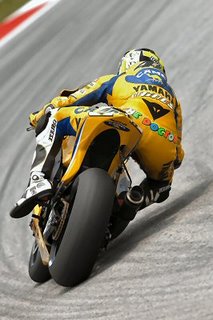 How winter testing lays the foundations of Michelin’s MotoGP success MotoGP is all about racing and winning but success during the summer racing season can usually be attributed to behind-the-scenes work during winter testing. Indeed riders cover many more laps during winter tests than they do actually racing. Nicolas Goubert, Michelin’s director of motorcycle racing, explains how the French company goes about its winter testing programme in order to be best prepared for the next MotoGP World Championship. The some of Michelin’s bestMotoGP riders take their turn…
How winter testing lays the foundations of Michelin’s MotoGP success MotoGP is all about racing and winning but success during the summer racing season can usually be attributed to behind-the-scenes work during winter testing. Indeed riders cover many more laps during winter tests than they do actually racing. Nicolas Goubert, Michelin’s director of motorcycle racing, explains how the French company goes about its winter testing programme in order to be best prepared for the next MotoGP World Championship. The some of Michelin’s bestMotoGP riders take their turn…
How does the Michelin winter testing programme work?
We try to concentrate first on tyre profile and size, because these are the most difficult factors to change and because they need to be confirmed as soon as possible so the teams can tune bike set-up. The first thing we do is give the basic dimensions of a new tyre to the teams so they can set up their bikes – ride height, gearbox and so on. Then we start work on tyre construction and finally we look at compounds. So the main focus points during the inter-season are profile, size and construction because when you work on compounds you are only really working for each individual racetrack, so we continue working on compounds even as we go from track to track during the season. When we do work on compounds during the inter-season it is more likely to be more experimental, trying something very different.
How do you decide on tyre profile and size?
From the feedback we get from our MotoGP riders and teams during the previous season and from our own simulations and bench testing. We start off with computer simulations. Say, for example, we wanted to increase the size of the tyre contact patch at medium lean angle as the rider is leaning into corner. We create a virtual tyre and look at the contact patch that profile would give us at 25 to 40 degrees lean angle, as well as what force that profile would create. Once you’re happy with the results achieved by the computer simulation you build a tyre and test it on a tyre dyno to make sure you get the same kind of results you were aiming for in the simulation. If the tyre works well on the dyno you then try it on a motorcycle on a racetrack.
We usually start this programme in the late summer, so we have already had a lot of races at a lot of different racetracks, which means we’ve got a good idea of what we want for the next season.
What about this winter, with the new 800s on the way?
This winter will be a bit different because everyone is using new bikes for 2007. Our MotoGP partners Honda and Yamaha have given us an indication of where they want to go with the 800s, what kind of character they expect from their bikes, plus an indication of horsepower outputs. We take all that into account plus riders’ comments from the season. Then we decide on a direction, so we are ready as soon as possible to test in November. We are looking forward to the first serious 800 tests once this season is over, then we can look really carefully at what kind of profiles will be best suited to the bikes.
How many different tyres do you test during a typical winter?
We don’t actually test many different profiles because making a tyre takes a lot of time and money, that’s why we do so much work on computer simulations. Last winter we tested two different rear profiles. And we quickly decided which of those two we would race with, following comments from different riders with different bikes.
Once you’ve started testing, how long does it take to produce a new profile?
It could take maybe a month to produce a new profile, so you could do that during the winter, though if you wanted something drastically different it might take much longer. We have some programmes that go on for ages, maybe a few years.
And how long to produce a new construction?
Again, it depends on how much you want to change things. If you were making just a small adjustment to a construction you could do it in a few days, while a major change could take one or two years.
What is the process once you start testing?
You always work by comparison. You bring the previous season’s profile to the early winter tests, in a compound that has worked well during the GP at that track, then you make comparisons with different riders. Even the first four or five laps with each rider can give you a good first impression of what the tyre is like.
If the riders are happy with the tyre and there’s no problem with tyre temperature or wear, we quickly move on to race-distance testing, because endurance is always the key, that’s where the results come from. It may be easy to find half a second a lap with a new profile, but that’s of no use to us if tyre performance drops off after a few laps.
If the endurance results are good, we move on to try the same tyre at other racetracks before we can really decide if we are moving in the correct direction. Just because a tyre works well at one track, doesn’t mean it will immediately work well at others. And if it works really well at one track but doesn’t work at the next two or three, then we have to put it aside.
How do you work with your riders?
We ask them to be as precise as possible in the comments they give to us, but essentially the way we work with our riders during testing is the same as the way we work with them at races.
What does it take to be a good test rider?
First of all the rider must be very fast! If we are to get really good feedback and information from a rider he also needs to be happy and confident on the bike and he mustn’t be distracted by any kind of problem. In addition to all of those factors the rider needs to have a very good feel for what’s happening out on the racetrack and he needs to be able to explain what’s happening, because feeling is one thing, explaining in language that can be understood is another.
To mention a few, Valentino (Rossi, Camel Yamaha Team YZR-M1-Michelin) and Colin (Edwards, Camel Yamaha Team YZR-M1-Michelin) are very gifted at this, also Dani (Pedrosa, Repsol Honda Team RC211V-Michelin), and Kenny (Roberts Junior, Team Roberts KR211V-Michelin) is also very precise and experienced.
THE RIDERS’ VIEWPOINT
Kenny Roberts Junior and Colin Edwards are two of Michelin’s best MotoGP test riders and crucial contributors to Michelin’s R&D programme. So what do they think is the secret to being a good tyre tester?
Kenny Roberts Junior
Why are you good at testing?
I’ve always needed a lot of grip and a lot of turning from my tyres, and to get that you end up spending a lot of time getting to know the tyres. I don’t know, it’s just something I’m good at, I give good feedback. You just try and tell the Michelin guys what the tyre feels like, turning-wise, grip-wise, under braking and so on. It’s basically all about understanding how a tyre works.
How important is winter testing?
There are a lot of things we go through during the winter, a lot of stuff that we need to get ready for the new year, but I’d say that tyres are the biggest thing. Tyres and the progress of your suspension set-up are probably 60 to 70 per cent of your testing load.
Why do Michelin have the edge in MotoGP?
From what I can see the company seems to be very motivated and very focused on what their achievements need to be. They want to win the championship, they want to win every race and they want to win qualifying. For them it’s not just an engineering exercise, it’s also a competition. Plus they’ve got a tremendous amount of experience.
How many tyres do you test at each winter test session?
Anything from ten to thirty. You’ll do between five and seven laps on each tyre to get an idea of what it’s like, then you may go try a race-distance run.
Is it more difficult to push a front to the limit and thus to test it fully?
In some ways it’s easier to get the initial feeling of a front tyre. But you can only really base what you think about a front on the feeling and the turning it’s giving you, rather than from sliding it into the corners. You don’t slide much with the front, not on purpose anyway!
Colin Edwards
What does it take to be a good test rider?
First off, a good rider has to know what he wants. I think that’s the important thing because you can get lost. I’m a racer, not an engineer or some suspension guru, so I just translate stuff the best I can to my guys. A lot of testing is just elimination, you’re eliminating certain ideas that the team has to get the bike to handle better, to stop better or whatever.
How difficult is it to push a new tyre to the limit?
For me it’s easiest to test tyres, because the tyres are the things touching the ground and you can usually tell within a lap or two if a tyre is better or worse. With some other stuff it’s difficult to feel any difference. But, of course, testing tyres isn’t at all easy. You’re riding 98 or 99 per cent, at 100 per cent some laps, because that’s the only way to get accurate information. You can’t go out there and run at 90 per cent.
You seem to enjoy testing more than some riders, why?
A lot of people despise having to ride lap after lap but when I was doing World Superbike I really started buckling down and going to Ladoux (Michelin’s Clermont-Ferrand test track) three times a year and burning a couple of thousand laps, I started to see how much we progressed their tyres. To me it feels like we do more testing than racing, but once you see the results it’s all worth it. You go to a few different tracks and if something works, you keep it, but often it’s not better than your base line, so you eliminate it. A lot of time it feels like you’re doing lap after lap after lap for nothing but you’re always building data. Ninety per cent of testing involves tyres, some of it long-distance stuff when Michelin wants to know if a good tyre will go the distance.
 How winter testing lays the foundations of Michelin’s MotoGP success MotoGP is all about racing and winning but success during the summer racing season can usually be attributed to behind-the-scenes work during winter testing. Indeed riders cover many more laps during winter tests than they do actually racing. Nicolas Goubert, Michelin’s director of motorcycle racing, explains how the French company goes about its winter testing programme in order to be best prepared for the next MotoGP World Championship. The some of Michelin’s bestMotoGP riders take their turn…
How winter testing lays the foundations of Michelin’s MotoGP success MotoGP is all about racing and winning but success during the summer racing season can usually be attributed to behind-the-scenes work during winter testing. Indeed riders cover many more laps during winter tests than they do actually racing. Nicolas Goubert, Michelin’s director of motorcycle racing, explains how the French company goes about its winter testing programme in order to be best prepared for the next MotoGP World Championship. The some of Michelin’s bestMotoGP riders take their turn…How does the Michelin winter testing programme work?
We try to concentrate first on tyre profile and size, because these are the most difficult factors to change and because they need to be confirmed as soon as possible so the teams can tune bike set-up. The first thing we do is give the basic dimensions of a new tyre to the teams so they can set up their bikes – ride height, gearbox and so on. Then we start work on tyre construction and finally we look at compounds. So the main focus points during the inter-season are profile, size and construction because when you work on compounds you are only really working for each individual racetrack, so we continue working on compounds even as we go from track to track during the season. When we do work on compounds during the inter-season it is more likely to be more experimental, trying something very different.
How do you decide on tyre profile and size?
From the feedback we get from our MotoGP riders and teams during the previous season and from our own simulations and bench testing. We start off with computer simulations. Say, for example, we wanted to increase the size of the tyre contact patch at medium lean angle as the rider is leaning into corner. We create a virtual tyre and look at the contact patch that profile would give us at 25 to 40 degrees lean angle, as well as what force that profile would create. Once you’re happy with the results achieved by the computer simulation you build a tyre and test it on a tyre dyno to make sure you get the same kind of results you were aiming for in the simulation. If the tyre works well on the dyno you then try it on a motorcycle on a racetrack.
We usually start this programme in the late summer, so we have already had a lot of races at a lot of different racetracks, which means we’ve got a good idea of what we want for the next season.
What about this winter, with the new 800s on the way?
This winter will be a bit different because everyone is using new bikes for 2007. Our MotoGP partners Honda and Yamaha have given us an indication of where they want to go with the 800s, what kind of character they expect from their bikes, plus an indication of horsepower outputs. We take all that into account plus riders’ comments from the season. Then we decide on a direction, so we are ready as soon as possible to test in November. We are looking forward to the first serious 800 tests once this season is over, then we can look really carefully at what kind of profiles will be best suited to the bikes.
How many different tyres do you test during a typical winter?
We don’t actually test many different profiles because making a tyre takes a lot of time and money, that’s why we do so much work on computer simulations. Last winter we tested two different rear profiles. And we quickly decided which of those two we would race with, following comments from different riders with different bikes.
Once you’ve started testing, how long does it take to produce a new profile?
It could take maybe a month to produce a new profile, so you could do that during the winter, though if you wanted something drastically different it might take much longer. We have some programmes that go on for ages, maybe a few years.
And how long to produce a new construction?
Again, it depends on how much you want to change things. If you were making just a small adjustment to a construction you could do it in a few days, while a major change could take one or two years.
What is the process once you start testing?
You always work by comparison. You bring the previous season’s profile to the early winter tests, in a compound that has worked well during the GP at that track, then you make comparisons with different riders. Even the first four or five laps with each rider can give you a good first impression of what the tyre is like.
If the riders are happy with the tyre and there’s no problem with tyre temperature or wear, we quickly move on to race-distance testing, because endurance is always the key, that’s where the results come from. It may be easy to find half a second a lap with a new profile, but that’s of no use to us if tyre performance drops off after a few laps.
If the endurance results are good, we move on to try the same tyre at other racetracks before we can really decide if we are moving in the correct direction. Just because a tyre works well at one track, doesn’t mean it will immediately work well at others. And if it works really well at one track but doesn’t work at the next two or three, then we have to put it aside.
How do you work with your riders?
We ask them to be as precise as possible in the comments they give to us, but essentially the way we work with our riders during testing is the same as the way we work with them at races.
What does it take to be a good test rider?
First of all the rider must be very fast! If we are to get really good feedback and information from a rider he also needs to be happy and confident on the bike and he mustn’t be distracted by any kind of problem. In addition to all of those factors the rider needs to have a very good feel for what’s happening out on the racetrack and he needs to be able to explain what’s happening, because feeling is one thing, explaining in language that can be understood is another.
To mention a few, Valentino (Rossi, Camel Yamaha Team YZR-M1-Michelin) and Colin (Edwards, Camel Yamaha Team YZR-M1-Michelin) are very gifted at this, also Dani (Pedrosa, Repsol Honda Team RC211V-Michelin), and Kenny (Roberts Junior, Team Roberts KR211V-Michelin) is also very precise and experienced.
THE RIDERS’ VIEWPOINT
Kenny Roberts Junior and Colin Edwards are two of Michelin’s best MotoGP test riders and crucial contributors to Michelin’s R&D programme. So what do they think is the secret to being a good tyre tester?
Kenny Roberts Junior
Why are you good at testing?
I’ve always needed a lot of grip and a lot of turning from my tyres, and to get that you end up spending a lot of time getting to know the tyres. I don’t know, it’s just something I’m good at, I give good feedback. You just try and tell the Michelin guys what the tyre feels like, turning-wise, grip-wise, under braking and so on. It’s basically all about understanding how a tyre works.
How important is winter testing?
There are a lot of things we go through during the winter, a lot of stuff that we need to get ready for the new year, but I’d say that tyres are the biggest thing. Tyres and the progress of your suspension set-up are probably 60 to 70 per cent of your testing load.
Why do Michelin have the edge in MotoGP?
From what I can see the company seems to be very motivated and very focused on what their achievements need to be. They want to win the championship, they want to win every race and they want to win qualifying. For them it’s not just an engineering exercise, it’s also a competition. Plus they’ve got a tremendous amount of experience.
How many tyres do you test at each winter test session?
Anything from ten to thirty. You’ll do between five and seven laps on each tyre to get an idea of what it’s like, then you may go try a race-distance run.
Is it more difficult to push a front to the limit and thus to test it fully?
In some ways it’s easier to get the initial feeling of a front tyre. But you can only really base what you think about a front on the feeling and the turning it’s giving you, rather than from sliding it into the corners. You don’t slide much with the front, not on purpose anyway!
Colin Edwards
What does it take to be a good test rider?
First off, a good rider has to know what he wants. I think that’s the important thing because you can get lost. I’m a racer, not an engineer or some suspension guru, so I just translate stuff the best I can to my guys. A lot of testing is just elimination, you’re eliminating certain ideas that the team has to get the bike to handle better, to stop better or whatever.
How difficult is it to push a new tyre to the limit?
For me it’s easiest to test tyres, because the tyres are the things touching the ground and you can usually tell within a lap or two if a tyre is better or worse. With some other stuff it’s difficult to feel any difference. But, of course, testing tyres isn’t at all easy. You’re riding 98 or 99 per cent, at 100 per cent some laps, because that’s the only way to get accurate information. You can’t go out there and run at 90 per cent.
You seem to enjoy testing more than some riders, why?
A lot of people despise having to ride lap after lap but when I was doing World Superbike I really started buckling down and going to Ladoux (Michelin’s Clermont-Ferrand test track) three times a year and burning a couple of thousand laps, I started to see how much we progressed their tyres. To me it feels like we do more testing than racing, but once you see the results it’s all worth it. You go to a few different tracks and if something works, you keep it, but often it’s not better than your base line, so you eliminate it. A lot of time it feels like you’re doing lap after lap after lap for nothing but you’re always building data. Ninety per cent of testing involves tyres, some of it long-distance stuff when Michelin wants to know if a good tyre will go the distance.
Oct 4, 2006
Hero Honda: What's up?

If you haven't already, visit www.cbzxtreme.com tjhe website for the new Hero Honda CBZ due to be launched very soon. I hear two strong rumours. The first says it will be 150cc, but heck of a lot more sporty than the Achiever and packed with the missing goodies - styling, alloys et al. The other says the bike is to be a kill'em all 180-odd cc machine with the goodies and fuel injection. I favour the sporty 150. It makes more commercial sense. Even if the 150 CBZ flopped, they'd sell more bikes than the 180 if it was a hit. I'd be happy with a well-tuned cheater (156cc) 150. We know from the Achiever that despite all our allegations and perconceptions, Hero Honda can turn out bikes that are actually fun to ride. Seriously, the Ach may have had packaging and value for money issues, but dudes, it's a seriously fun bike. This would also mean that the brilliant Unicorn engine (it's the rest of it that I have a problem with) will make another appearance, hopefully accompanied by the tackle it deserves. Can't wait.
The other rumour I chanced upon yesterday regarded the Karizma. The poor Kari has been running on its own without any attention from the maker. Now with the DTS-Fi imminent (late-November/early-December seems to be the date window), it makes sense for HH to upgrade/reload the Karizma. Honda should find it easy to put in a PGM-FI system, extract more power from the soft motor et voila.
For a year that's basically gone by without any action at all, this could just be the sting in the tail


